Long distance bicycle rides require a significant amount of hydration to maintain performance and energy levels. There are many bicycle water bottles available for riders, but choosing the wrong one can have a negative impact on the cycling experience. Both seasoned cyclists and casual riders require water bottles that are easy to use and durable, and an insulated bottle with a long life span won’t hurt either.
This guide will dive into the best bicycle water bottles for long distance rides, and will look at the key features of the most popular styles of water bottles among consumers.
Table of Contents
Global market value of bicycle water bottles
Best bicycle water bottles for long distance rides
Conclusion
Global market value of bicycle water bottles
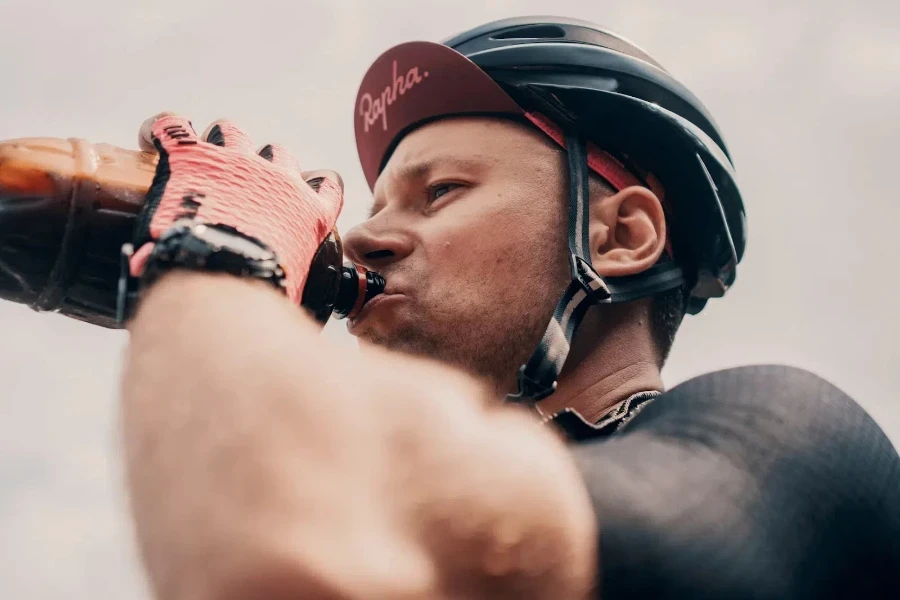
The demand for bike water bottles is on rise, and this is down to a number of factors. An increasing focus on eco-friendly and sustainable products is driving companies to develop sustainable solutions to their products. Many consumers are now fully invested in purchasing reusable water bottles for all types of activities. The market is also seeing an upward trend in the number of consumers enquiring about personalized water bottles, for both sports and other activities, in different colors and patterns.
At the start of 2024, the global market value of bicycle water bottles was approximately USD 14 billion. This number is projected to grow at a compound annual growth rate (CAGR) of at least 8.71% between 2024 and 2031. This will significantly increase the overall market value by bringing the total up to around USD 25.12 billion by 2031. The largest market for bicycle water bottles is in the United States.
Best bicycle water bottles for long distance rides
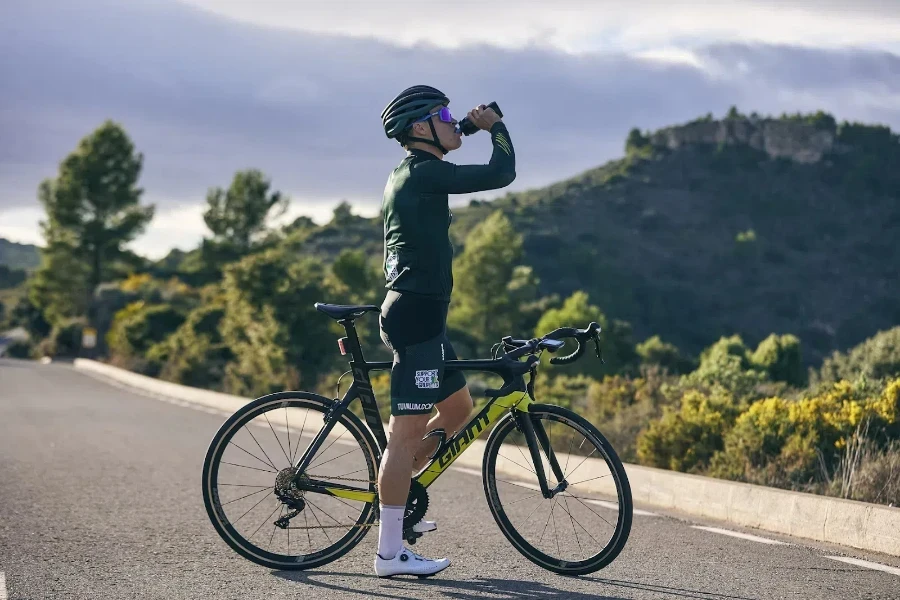
Choosing cycling water bottles for long distance rides can be a tough task since there are so many options available on the market. A cycling enthusiast will want to purchase water bottles that offer a high level of durability and that provide insulation to keep their drinks cool. Having water bottles that are easy to use while on the move is also an important feature that all cyclists will be looking for.
According to Google Ads, “bicycle water bottles” has an average monthly search volume of 8100. More than 30% of these searches come between June and September, when cycling is at its peak in a lot of countries around the world. The least searches come in February, November, and December with just 6600 per month.
Google Ads also shows that the most searched for types of bicycle water bottles are “squeeze bottles” with 40,500 searches per month followed by “hydration packs” with 18,100 searches and “insulated bottles” with 9900 searches. Keep reading to learn more about the wide range of high-quality bike water bottles available.
Squeeze bottles
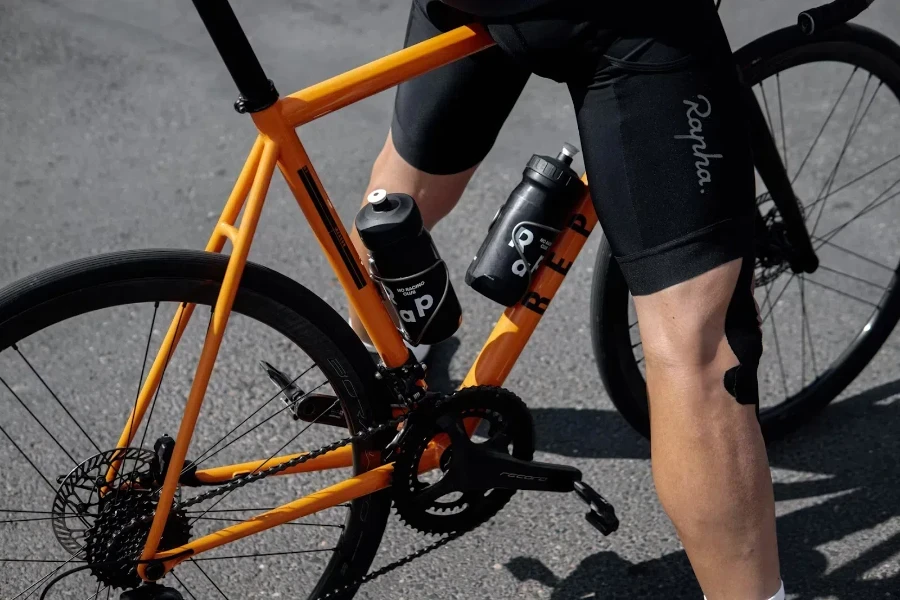
Squeeze bicycle water bottles are among the most popular types of compact bottles for all sports. They’re made from lightweight materials such as flexible plastics which offer both durability and make them easy to handle. The soft design allows the rider to effortlessly squeeze the bottle and hydrate themselves, even when they’re in the middle of a ride.
It’s important that the materials used are BPA-free to ensure that no harmful chemicals leach into the water which is more likely to occur during long rides. In addition, these bottles have a single wall design so they may not keep liquid cool for the duration of the day. They are, however, dishwasher safe with leak-proof lids.
These shaped water bottles have an easy access design that’s operated using one hand, which makes them both convenient and safe to use while cycling. Safety is very important with all types of cycling accessories and these bottles allow cyclists to maintain control of their bicycles at all times. Many styles of these unique shaped bottles also include self-sealing caps that are leak-proof, regardless of how bumpy the terrain is.
The ergonomic designs of these plastic bottles will often include grooves on the body that allow for better grip when they’re being used as well as when they’re being placed back in the bottle cage. These water bottles are popular not only for their easy-squeeze technology but also because they are very budget friendly.
Squeezable bottles are known for their great prices, but prices will increase depending on the level of insulation, the brand, and the advanced features that they have, but they should still sit at under USD 25.00 per bottle. Most water bottles sit between 22 and 24 oz and are made of high-quality materials.
Hydration packs
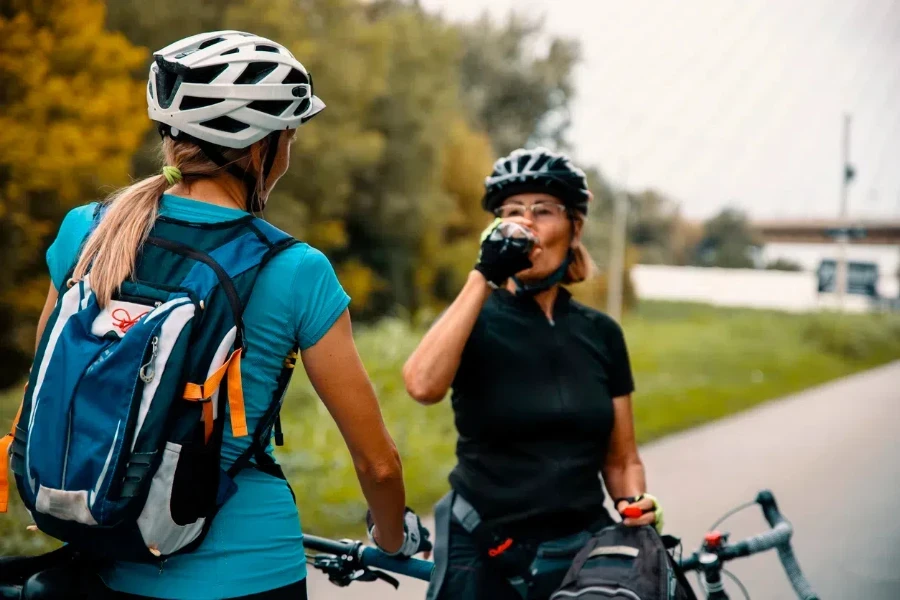
Although they’re not water bottles in the traditional sense, hydration packs are highly sought after among cyclists who require higher levels of water storage and lots of cold water. They offer hands-free access through a tube that’s connected to the water bladder and are ideal for the avid mountain biker.
The bladder itself sits inside a pack that’s worn like a backpack so cyclists don’t need to reach for their water, and it’s closed using a zipper. This is very beneficial for cyclists who are doing challenging rides and need to maintain their momentum.
Hydration packs will feature adjustable straps to ensure a secure fit as well as several storage compartments for riders to carry accessories or snacks. The bite valve on the end of the tube helps to prevent leaks from occurring and make sure that there’s steady flow of water. BPA-free materials like TPU or polyethylene should be used for the bladder since they’re known for their durability.
The bladders of hydration packs have wide openings for easy cleaning and filling, while the tubes are fitted with insulated sleeves to help keep the water cool, even in direct sunlight. A rider’s needs include packs that offer comfortable support, with breathable fabrics and lightweight materials, to help them achieve peak performance.
Hydration packs are known to be more expensive than standard bicycle water bottles due to their cutting-edge technology but they’re great value for cyclists who go on long distance adventures. They’re also preferred by cyclists using a mountain bike who don’t want to install bike bottle cages into the frame.
Insulated bottles
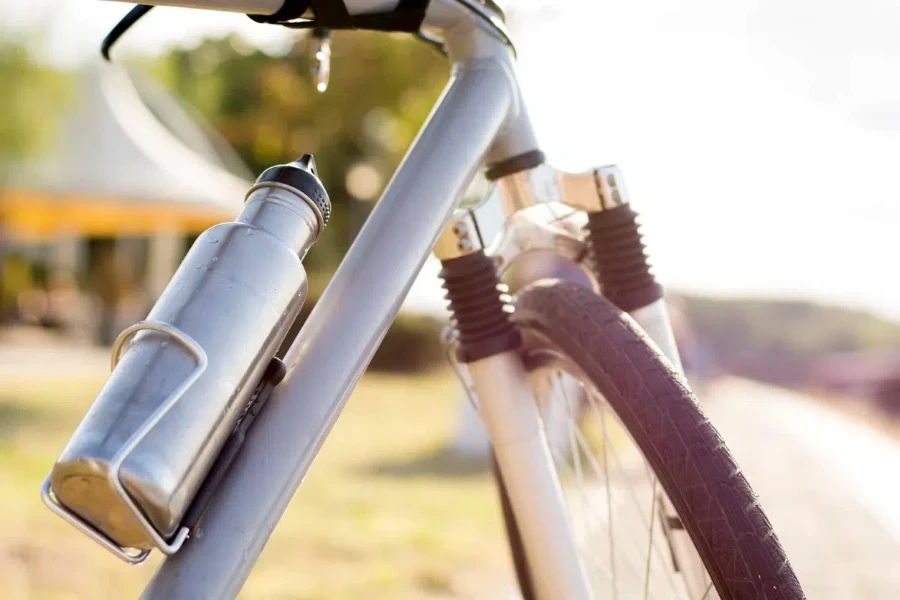
Insulated water bottles are among the most popular water bottles for long-distance adventures. They feature a double or triple wall insulation that has a vacuum layer between them, unlike standard water bottles. This helps to keep the water cold or warm and prevents unwanted heat transfer in the height of summer.
For people who are cycling during cold winters, having water bottles that can store warm liquids is a great feature that non-insulated bottles can’t compete with.
These water bottles are either made from high-quality stainless steel or free from BPA plastics to ensure that the water remains free from contaminants and has no plastic taste. Both of these materials are lightweight and are able to effectively maintain the temperature desired by the individual. Some riders will prefer the soft squeeze bottle though since it’s easier to use while moving.
Due to their ability to maintain both hot and cold temperatures, the price for insulated water bottles is slightly more than regular squeezable bottles. However, they’re seen as a good investment for long-distance cyclists who need a reliable source of hydration in varying environmental conditions.
The zero plastic smell and the fact that the water bottle fits in the bike’s bottle cage are just a few bonuses. This may not be cutting-edge gear, but these bottles are ideal for all types of cycling situations and experiences.
Conclusion
The most important features of any bicycle water bottles are the amount of insulation they provide, their ease of use, and their durability. Especially for long-distance rides, consumers will be on the hunt for water bottles that can keep them hydrated and are easy to use, even when they’re in motion. And they’ll be making their perfect water bottle purchase with sustainability in mind, even if it’s a standard bottle.
Other bike gear such as the bicycle tires and bicycle fenders are also important for longer rides in tough terrain. Bicycle water bottles are available for selection in a variety of sizes, but larger bottles aren’t practical for many cyclists.




